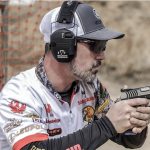On Wednesday, April 21 in Indianapolis, nearly 70 sporting goods industry executives from more than 35 different sporting goods companies met with the leadership of SGMA, NCAA, and the National Federation of State High School Associations (NFHS) to discuss rules changes for college and high school sports. This was the fourth such meeting in as many years involving SGMA, its membership, the NCAA, and the NFHS.
When changes to rules are made in any sport, it often impacts the equipment, gear, and uniforms used in that sport, said SGMA President Tom Cove. In other words, it takes time to design and manufacture new items that must be produced to a new standard or code. By consulting with the companies that manufacture these items, we can avoid potential problems by ensuring that a rules change is not implemented before the necessary adjustment can be made at the manufacturing level.
This meeting is truly important because it allows us to establish and maintain a strong level of communication with SGMA and its member companies, said Bob Gardner, the chief operating officer (and next executive director) of the NFHS. This annual meeting is an important step in fulfilling our overall mission as we create rules that are in the best interests of all athletes in high school sports around the country. We are pleased with our strong relationship with SGMA and the growing response we are get from its membership each year.
The sports where rules changes were discussed included baseball, basketball, field hockey, football, gymnastics, ice hockey, lacrosse, soccer, softball, spirit, swimming & diving, track & field, volleyball, water polo, and wrestling.
Companies represented at this meeting included adidas, Anderson Bat Company, Augusta Sportswear, Baden Sports, Baseball Rampage, Callaway Golf Company, Combat Sports Group, Cutters, Diamond Sports, Dow Corning, Easton-Bell Sports, Gil Athletics/Porter Athletics, GTM Sportswear, Hillerich & Bradsby, Jarden Team Sports, Kelme NA/Twin City, Mattingly Hitting Products, Metalwood Bat, Mikasa, Mizuno USA, Nike, No Look Productions, Reebok, Russell Athletic, Saranac Gloves, Schutt Sports, Shock Docter, Spalding, STX, Sport Supply Group, TapOut Mouthguards, Under Armour, Warrior Lacrosse, and Wilson Sporting Goods.
This meeting is about relationship building within the sporting goods industry, said Stephen Fitzgerald, senior vice president of the Combat Sports Group. By coming to this meeting, you get a ‘heads-up on issues being discussed both within your sport as well as other sports. This venue represents a clearinghouse of information on issues that affect your business.
Its extremely beneficial to have the opportunity to hear from the NCAA and the National Federation before a rules change is approved, said James Sass, director of marketing for Louisville Slugger. In addition, both of those groups are to be commended for asking our thoughts on how a rules change can impact the production process.
The group also heard presentations from the NFHSs Gardner, from the NCAAs Ty Halpin and Peter Davis, from Mike Oliver of the National Operating Committee for Standards on Athletic Equipment (NOCSAE), from SGMAs Tom Cove, from SGMA Researchs Neil Schwartz, and from Ohio State Universitys Dawn Comstock.
According to Gardner, the NFHS is not moving forward with the authenticating mark issue right now, but it will remain a topic of interest to the NFHS.
Halpin said the actions and decisions of the NCAAs rules committees are always affected by issues such as safety, the image of the sport, economics, and minimization of risk.
Davis said the NCAA is looking for more organic opportunities with potential sponsors. A good example is the NCAAs current deal with Werner Ladders, the official ladder of the NCAA. Werner Ladders are used to cut down the nets after regional final victories and national championship title games.
Oliver told the audience that his group monitors injuries to assess whether standards need to be changed. He also admitted that when NOCSAE changes a standard, its important to know (1) that the change will be effective and (2) that the change will not increase the chance of an injury in another area of the body.
Cove said the U.S. consumer of sports products in 2009 was looking for brand names, a basic product, at less cost. He acknowledge that the consumers were looking for a deal last year. On a positive note, spending patterns should improve this year, especially among active Americans. Cove also revealed that recent research by SGMA indicates that children now taking PE in schools are 3-4 times more likely to be active. He also said that todays adults who took PE in school are 50%+ more likely to be active as adults.
Schwartz disclosed that this year SGMA Research is planning to look more deeply into the team sports business with its first-ever nationwide survey of athletic directors and coaches — Athletic Directors and Coaches Buying Habits and Brand Study. Working together with the NIAAA and the NFHS, SGMA Research aims to uncover a number of key issues and challenges designed to help manufacturers and retailers maintain their relationships and grow their respective businesses.
The presentation by Comstock focused on the NFHS Injury Surveillance System which she is spearheading from her office at Ohio State University. In her study, the goal is to collect data to monitor high school injury trends and patterns of injuries over time. That information is then shared with the various rules committees of the NFHS so that any changes to rules to reduce injuries are ‘data driven and not based on anecdotal evidence or emotion. Comstock has been analyzing high school injuries since 2005. From 2005-2009, there were 2.35 injuries to high school athletes per 1,000 athlete exposures. She stated more injuries occur in competitions than in practices.













